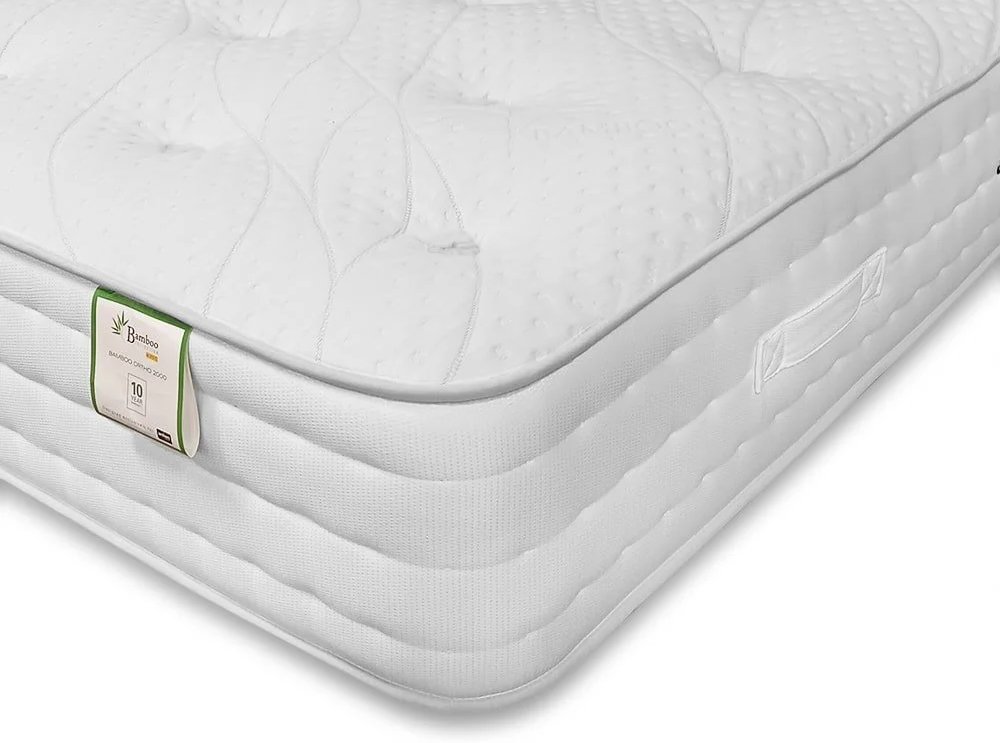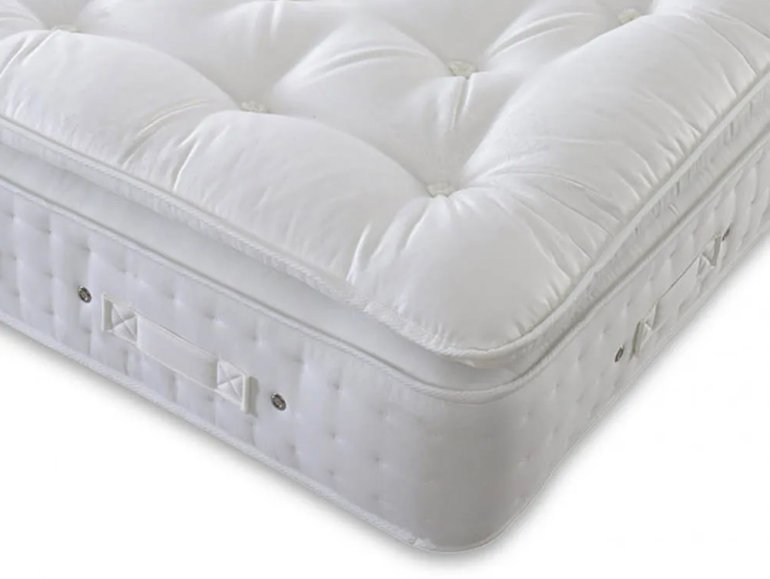When shopping for a new mattress, understanding the terminology can help you make an informed decision. From sizes and fillings to spring systems and covers, there’s a lot to consider. In this guide, we’ll break down the most common mattress terms, so you can find the perfect mattress for your needs.

Mattress Sizes Explained
Mattresses come in a range of sizes to suit different sleepers and room types:
- Small Single (75cm x 190cm): Ideal for children's beds or compact guest rooms, small single mattresses save space without compromising comfort.
- Single (90cm x 190cm): The most popular size for one person, single mattresses are a great choice for small bedrooms and are often used for children's beds and guest beds.
- Large Single (105cm x 190cm): Offering extra width compared to a standard single, this size is perfect for individuals who prefer a bit more sleeping space without moving to a double bed.
- Small Double (120cm x 190cm): Often referred to as a "three-quarter" bed, small double mattresses are ideal for smaller bedrooms or those needing extra space without a full double size.
- Double (135cm x 190cm): A versatile choice, double mattresses suit most couples or those who like a little more space to stretch out.
- King Size (150cm x 200cm): King size mattresses offer plenty of space for couples or taller individuals, with an extra 10cm in length compared to a standard double.
- Super King Size (180cm x 200cm): For ultimate luxury, super king mattresses provide the maximum width and length, offering plenty of room for two people to sleep comfortably.
Euro (Ikea) Sizes
Euro-size mattresses offer slightly different dimensions than UK-standard mattresses:
- Euro Single (90cm x 200cm): Offers extra length compared to a UK single, making it a good choice for taller sleepers.
- Euro Double (140cm x 200cm): A little wider than a UK double and slightly longer, this size is popular in continental Europe.
- Euro King (160cm x 200cm): Offering more width than a UK king, Euro kings are great for those who need additional space but have a European bed frame.
Mattress Spring Systems
The type of springs or support system in a mattress plays a big role in its overall feel and durability:
- Open Coil Springs: This traditional spring system features interconnected springs that offer even support across the mattress. Open coil mattresses tend to be lighter and more affordable, though they may not offer as much motion isolation.
- Pocket Springs: Pocket-sprung mattresses contain individual springs encased in their own fabric pockets. This design allows the springs to move independently, providing better support and minimising movement transfer.
- Foam: Foam mattresses, including memory foam and reflex foam options, offer excellent pressure relief and conform to the body. They are ideal for side sleepers and those with joint issues.
- Hybrid: A hybrid mattress combines both springs and foam, offering the support of a spring system with the comfort and pressure-relieving qualities of foam.
Zip and Link Mattresses

Pillow Top Mattresses

Trade/Crib 5 Mattresses
Crib 5 mattresses are designed to meet strict fire safety regulations, making them ideal for commercial environments such as hotels and care homes. These mattresses are rigorously tested for fire resistance, ensuring peace of mind in both trade and home settings.Waterproof Mattresses

Mattress Fillings
Mattresses come with various fillings, each offering its own benefits:
- Memory Foam: Known for its contouring abilities, memory foam responds to body heat, moulding to your shape and providing pressure relief.
- Latex-Infused Foam: This filling offers a more breathable and responsive feel than traditional memory foam, making it a good choice for those who want pressure relief without the heat retention.
- Cool Gel: Cool gel-infused foam helps regulate temperature, making it ideal for hot sleepers.
- Natural Fillings: Wool, cotton, and silk are common natural fillings that offer a more eco-friendly option. These materials are breathable, moisture-wicking, and hypoallergenic, making them perfect for allergy sufferers.
Mattress Edge Support
- Foam Encapsulated Edges: Mattresses with foam-encapsulated edges offer better edge support, making the mattress feel more stable and usable across the entire surface.
- Rod Wire Edges: Found in traditional spring mattresses, rod wire edges provide a firm boundary around the mattress, preventing sagging and extending the mattress's lifespan.
Mattress Covers
The cover of a mattress affects its feel and durability:
- Damask Covers: A traditional woven fabric, damask is durable and provides a firm, supportive feel.
- Bamboo-Infused Covers: Bamboo-infused covers are breathable, moisture-wicking, and naturally anti-bacterial, making them great for keeping cool during sleep.
- Stretch Knit Covers: These covers are soft, stretchy, and often found on foam or hybrid mattresses, allowing for better contouring to the body.
How to Care for Your Mattress
Caring for your mattress will help extend its life:
- Rotate your mattress regularly to ensure even wear and tear. If the mattress is double sided then it should also be flipped over.
- Use a mattress protector to guard against spills and allergens.
- Vacuum your mattress regularly to remove dust and debris.
- Avoid bending or folding your mattress, as this can damage the springs or foam.
With these mattress terms explained, you’re now ready to choose the right mattress with confidence. Happy shopping!